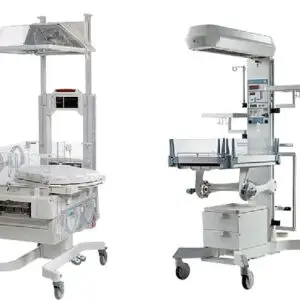Description
A Cardiology Machine refers to various medical devices and equipment used in cardiology to diagnose, monitor, and treat heart-related conditions. Here are some key types of cardiology machines and their functions:
- Electrocardiogram (ECG or EKG) Machine
– Function: Measures the electrical activity of the heart, producing a graphical representation called an electrocardiogram.
– Uses: Helps diagnose arrhythmias, heart attacks, and other cardiac conditions. It’s often used in hospitals, clinics, and during routine check-ups.
- Echocardiogram Machine
– Function: Uses ultrasound waves to create images of the heart’s structure and function.
– Uses: Assesses heart size, shape, and motion, and evaluates blood flow through the heart and its valves. It’s crucial for diagnosing heart conditions like heart failure and valvular disease.
- Stress Test Equipment
– Function: Monitors the heart’s activity during physical stress, usually on a treadmill or stationary bike.
– Uses: Evaluates how the heart responds to exertion, helping to identify coronary artery disease or arrhythmias.
- Holter Monitor
– Function: A portable device worn by the patient that continuously records the heart’s electrical activity for 24 to 48 hours.
– Uses: Detects irregular heartbeats or arrhythmias that may not be captured during a standard ECG.
- Event Monitor
– Function: Similar to a Holter monitor but used for longer periods, typically up to 30 days, to capture infrequent heart events.
– Uses: Helps diagnose intermittent arrhythmias by allowing patients to trigger the recording when they experience symptoms.
- Cardiac Catheterization Equipment
– Function: Involves a thin tube (catheter) inserted into a blood vessel to assess heart conditions, often combined with imaging techniques.
– Uses: Used for diagnostic purposes, such as angiography, and for therapeutic procedures like angioplasty and stent placement.
- Defibrillator
– Function: Delivers an electric shock to restore normal heart rhythm in cases of life-threatening arrhythmias or cardiac arrest.
– Uses: Used in emergency situations, often found in hospitals, ambulances, and public spaces as Automated External Defibrillators (AEDs).
- Implantable Cardioverter Defibrillator (ICD)
– Function: A device implanted in the chest that continuously monitors the heart’s rhythm and delivers shocks if dangerous arrhythmias are detected.
– Uses: Helps prevent sudden cardiac arrest in patients at high risk.
Importance in Cardiology
Cardiology machines are essential tools in diagnosing and treating heart diseases, allowing for:
– Early detection of heart conditions.
– Continuous monitoring of patients with known heart issues.
– Guidance in treatment decisions, including surgical interventions.
– Improved patient outcomes through timely intervention and management.
Trends and Advances
Modern cardiology is witnessing advances like telecardiology, where cardiology machines integrate with digital platforms for remote monitoring and diagnosis. Artificial intelligence is also being integrated into these devices to enhance diagnostic accuracy and efficiency.












Reviews
There are no reviews yet.